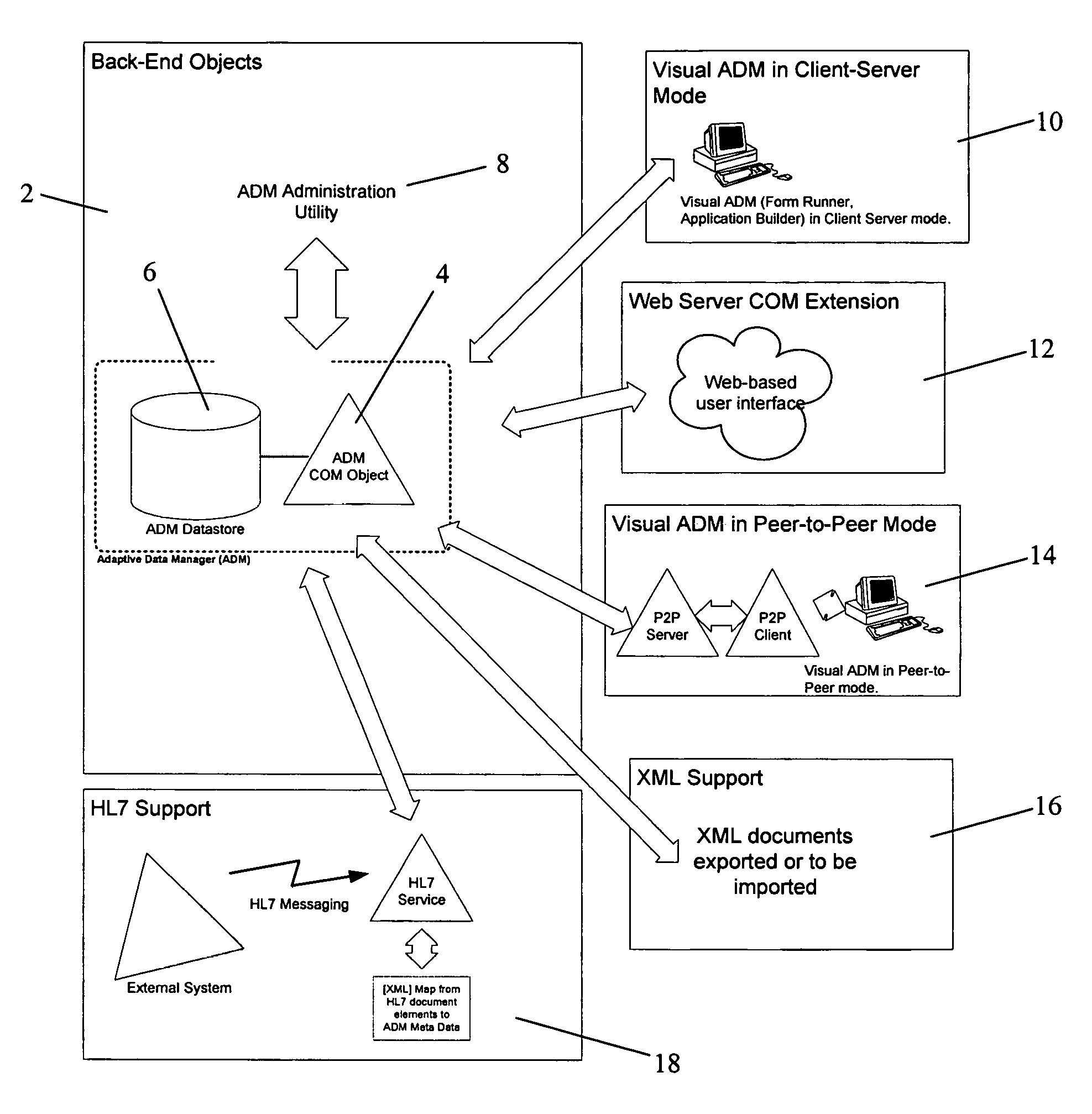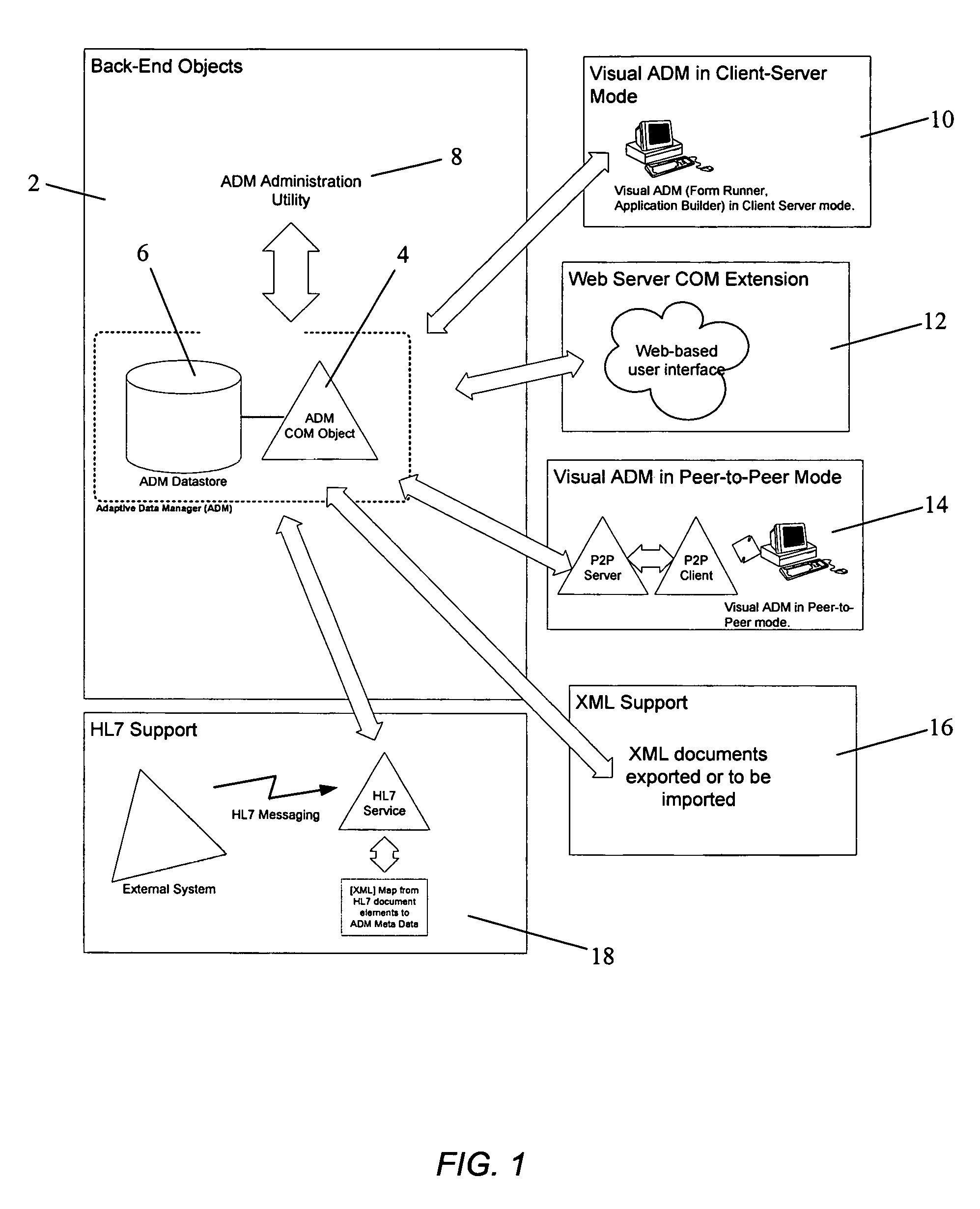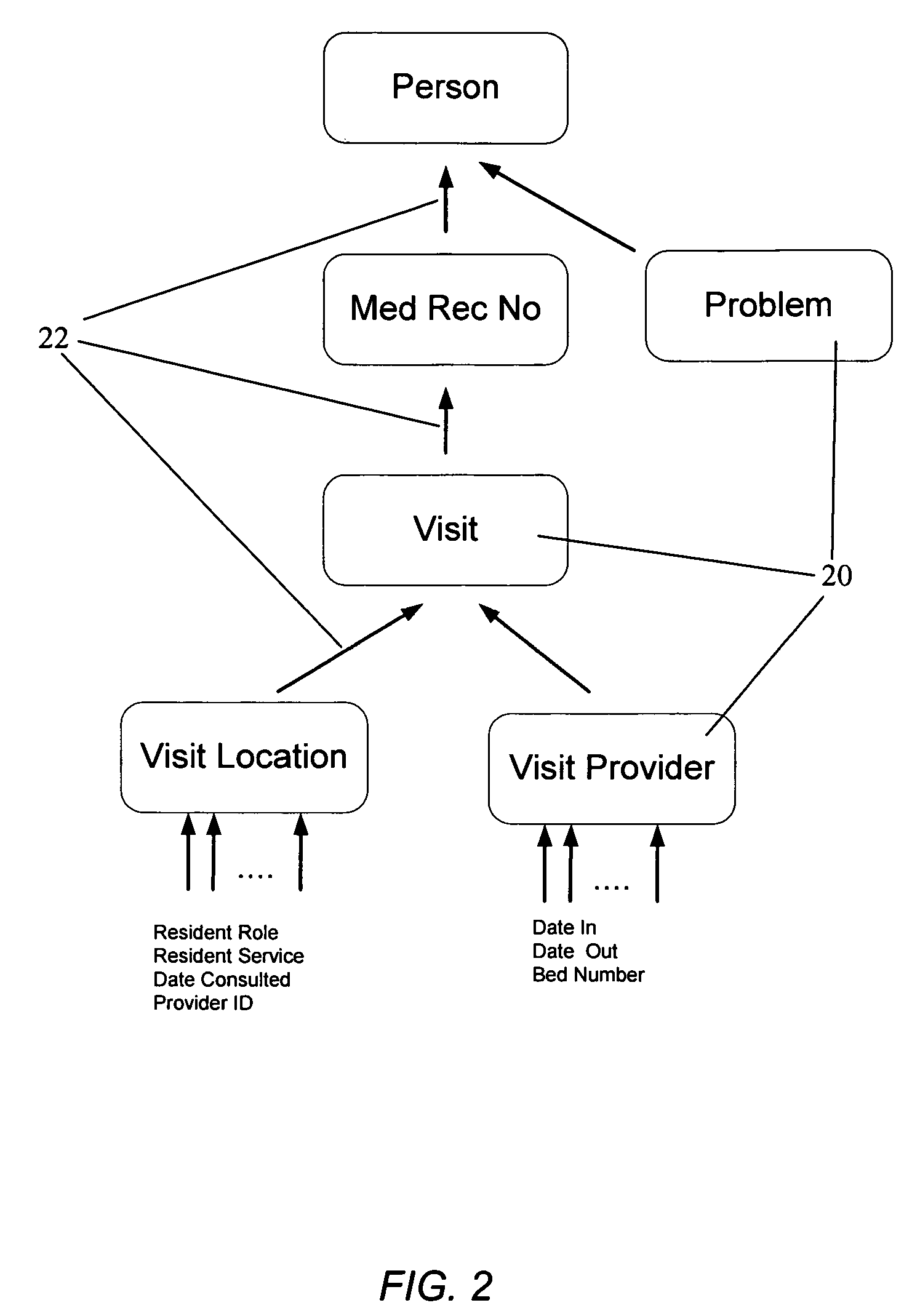Method for adaptive data management
a data management and data technology, applied in the field of data management, can solve the problems of complex, time-consuming and expensive phases of data warehousing projects, and the effort to create data management systems and software for databases has involved extremely long and costly development cycles for database design, implementation, tuning and maintenance, and still requires significant amounts of time to implemen
- Summary
- Abstract
- Description
- Claims
- Application Information
AI Technical Summary
Problems solved by technology
Method used
Image
Examples
Embodiment Construction
1.—ADM
[0029]The present invention provides both a back-end information storage infrastructure and a flexible development environment providing a simple component interface to complex back-end data storage. The present invention may also be conceptualized as a role-based enterprise application server, whereby administrators and end-users respectively manage and access the application (and thus the back-end data) through a role-based security scheme. It is an object of the invention to provide a method and system for developing software and managing data while avoiding or minimizing lengthy and costly development cycles for database design, implementation, tuning and maintenance, data cleansing, building of database dimensional models such as snowflake models or the like, and difficulties in harvesting data and generating reports and user screens. ADM thus may be though of as managing complexity; it may organize large and complex data repository structures and generally may simplify t...
PUM
 Login to View More
Login to View More Abstract
Description
Claims
Application Information
 Login to View More
Login to View More - R&D
- Intellectual Property
- Life Sciences
- Materials
- Tech Scout
- Unparalleled Data Quality
- Higher Quality Content
- 60% Fewer Hallucinations
Browse by: Latest US Patents, China's latest patents, Technical Efficacy Thesaurus, Application Domain, Technology Topic, Popular Technical Reports.
© 2025 PatSnap. All rights reserved.Legal|Privacy policy|Modern Slavery Act Transparency Statement|Sitemap|About US| Contact US: help@patsnap.com



